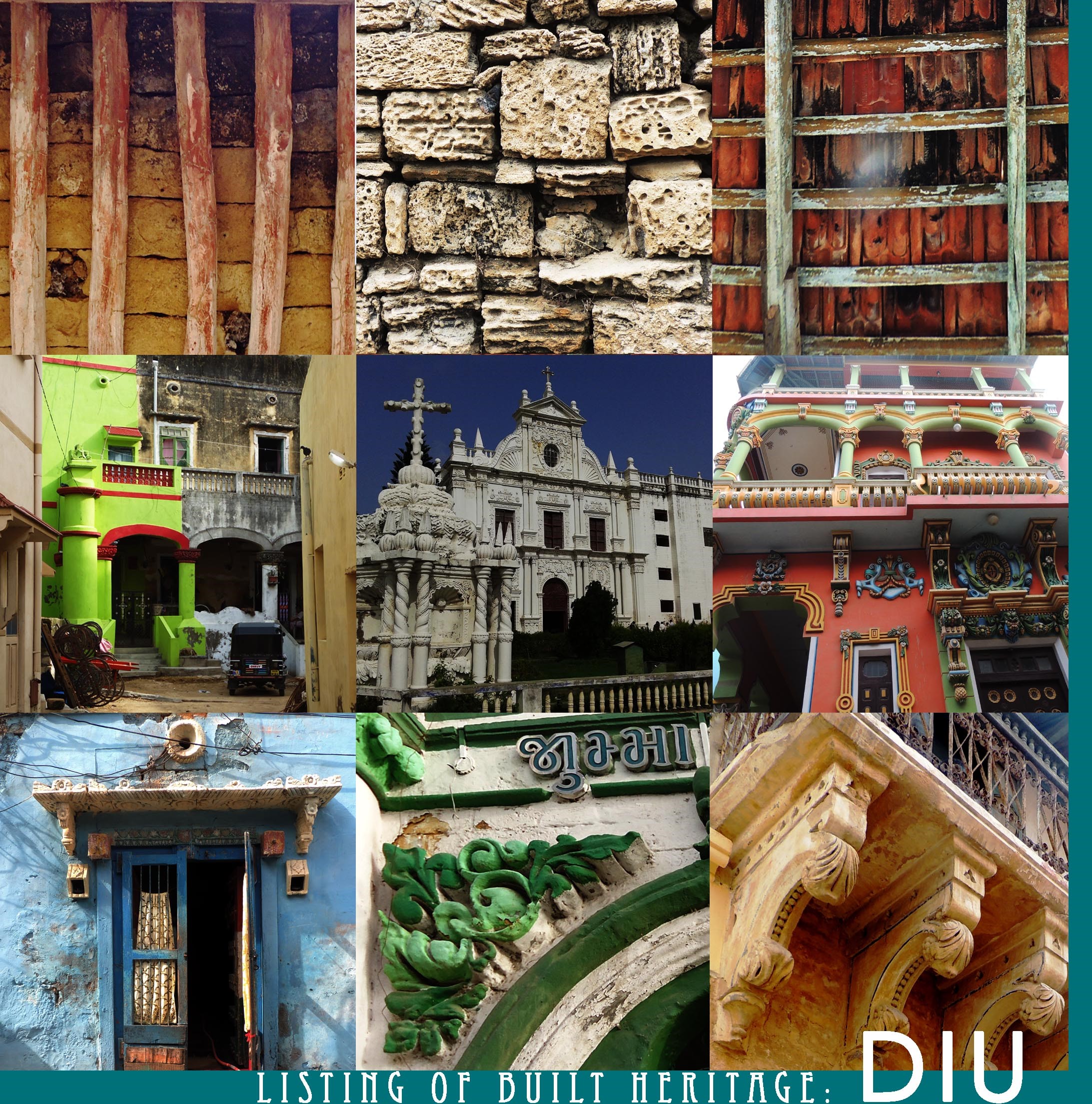Ongoing – Listing of Built Heritage, Diu
 The Diu Island is marked by its massive Portuguese structures, its beaches and its cluster of old residential colonies. The island was first captured by many Hindu and Muslims dynasties till 1535 A.D and then was finally seized by the Portuguese in 1935 A.D: a turning point in Diu Architecture. From a glance Diu would appear as a landmark of dominating fortress and the catholic churches. To witness the real Diu one has to meditate through the intertwining lanes of the walled city. The residences of theses lanes speak aloud of themselves, the finest carving, the modest facades with mesmerizing interiors and the hung glass lamps portrays the aura of the people residing here since hundreds of years. It’s the only place where one could find the perfect amalgamation of Portuguese architecture in pure Indigenous style.
The Diu Island is marked by its massive Portuguese structures, its beaches and its cluster of old residential colonies. The island was first captured by many Hindu and Muslims dynasties till 1535 A.D and then was finally seized by the Portuguese in 1935 A.D: a turning point in Diu Architecture. From a glance Diu would appear as a landmark of dominating fortress and the catholic churches. To witness the real Diu one has to meditate through the intertwining lanes of the walled city. The residences of theses lanes speak aloud of themselves, the finest carving, the modest facades with mesmerizing interiors and the hung glass lamps portrays the aura of the people residing here since hundreds of years. It’s the only place where one could find the perfect amalgamation of Portuguese architecture in pure Indigenous style.
The Diu administration and INTACH has taken initiative to list these built heritage structures of Diu. A team of conservation architects and architects visited the town twice and did a comprehensive on-field survey to discover, geo-locate and document the structures. The listing is under finalization stage and will be submitted to the Diu Administration in near future.









